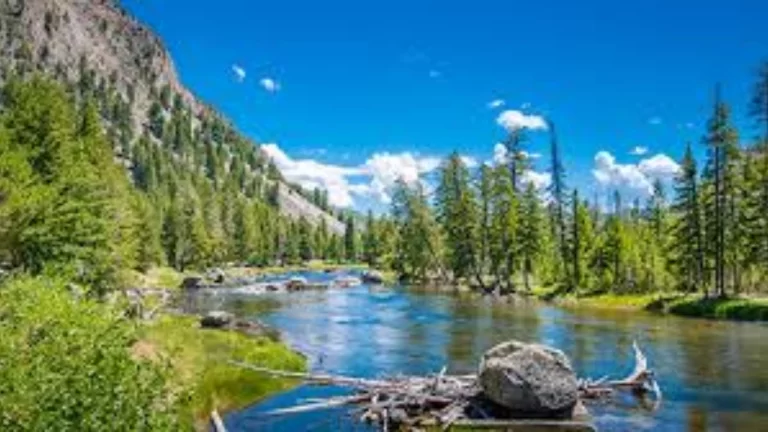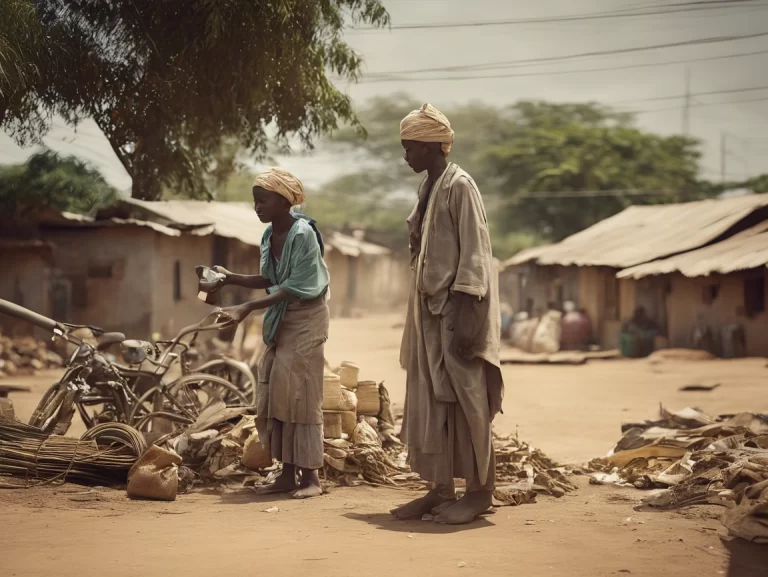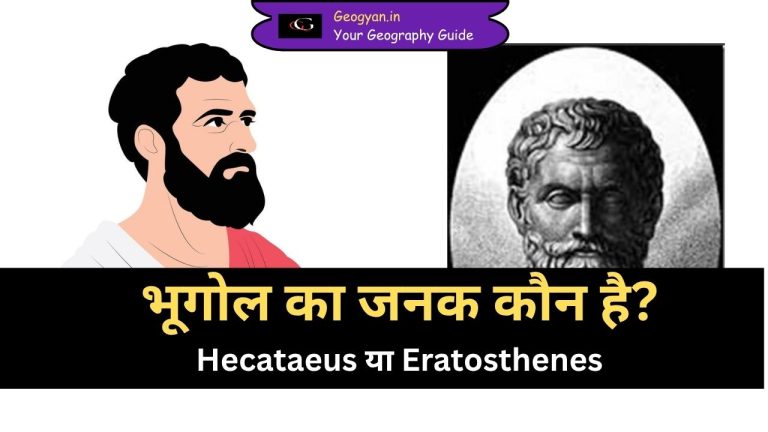Access the latest NCERT Solutions for Class 7 Geography Chapter-2: Inside Our Earth, updated for 2024-2025. Solution is designed to help students tackle difficult questions with ease. The content is written in simple, easy-to-understand language.
Exercise
1. Answer the following questions:
(i) What are the three layers of the earth?
The three layers of the Earth are:
- Crust
- Mantle
- Core
(ii) What is a rock?
A rock is a natural mass of mineral matter that makes up the Earth’s crust. Rocks can vary in color, size, and texture.
(iii) Name three types of rocks.
The three types of rocks are:
- Igneous rocks
- Sedimentary rocks
- Metamorphic rocks
(iv) How are extrusive and intrusive rocks formed?
- Extrusive rocks are formed when molten magma comes to the Earth’s surface, cools down quickly, and solidifies. Example: Basalt.
- Intrusive rocks are formed when molten magma cools slowly beneath the Earth’s surface, forming large grains. Example: Granite.
(v) What do you mean by a rock cycle?
The rock cycle is the process through which rocks transform from one type to another. For example, igneous rocks can break down into sediments, which may form sedimentary rocks, and these can further change into metamorphic rocks under heat and pressure. Eventually, these rocks may melt to form magma, which can cool and solidify into igneous rocks again.
(vi) What are the uses of rocks?
Rocks are used for:
- Building houses, roads, and other structures.
- Making monuments and sculptures.
- Industrial purposes, as many rocks contain valuable minerals.
- Games like hopscotch and pitthoo.
(vii) What are metamorphic rocks?
Metamorphic rocks are formed when existing igneous or sedimentary rocks undergo transformation due to extreme heat and pressure. Example: Limestone changes into marble under heat and pressure.
2. Tick the correct answer:
(i) The rock which is made up of molten magma is
(a) Igneous ✔
(b) Sedimentary
(c) Metamorphic
(ii) The innermost layer of the earth is
(a) Crust
(b) Core ✔
(c) Mantle
(iii) Gold, petroleum and coal are examples of
(a) Rocks
(b) Minerals ✔
(c) Fossils
(iv) Rocks which contain fossils are
(a) Sedimentary rocks ✔
(b) Metamorphic rocks
(c) Igneous rocks
(v) The thinnest layer of the earth is
(a) Crust ✔
(b) Mantle
(c) Core
3. Match the following:
(i) Core (a) Earth’s surface
(ii) Minerals (b) Used for roads and buildings
(iii) Rocks (c) Made of silicon and alumina
(iv) Clay (d) Has definite chemical composition
(v) Sial (e) Innermost layer
(f) Changes into slate
(g) Process of transformation of the rock
Ans.
| (i) Core | (e) Innermost layer |
| (ii) Minerals | (d) Has definite chemical composition |
| (iii) Rocks | (b) Used for roads and buildings |
| (iv) Clay | (f) Changes into slate |
| (v) Sial | (c) Made of silicon and alumina |
4. Give reasons:
(i) We cannot go to the center of the Earth.
We cannot go to the center of the Earth because it is extremely hot and has very high pressure, making it impossible to reach.
(ii) Sedimentary rocks are formed from sediments.
Sedimentary rocks are formed when small fragments of rocks, minerals, and organic matter (sediments) are compressed and cemented together over time.
(iii) Limestone is changed into marble.
Limestone changes into marble when it is subjected to high heat and pressure over a long period, causing it to undergo a transformation into a metamorphic rock.
Other Important Short Answer Type Question
Here are important short answer type questions and answers based on Chapter 2 of NCERT Class 7, “Inside Our Earth.” These questions go beyond the exercise and align with previous years’ NCERT exams and UPSC.
1. What is the structure of the Earth’s interior?
The Earth is composed of three main layers: the crust, mantle, and core. The crust is the outermost and thinnest layer, composed of rocks like silica and alumina. Beneath the crust lies the mantle, extending up to 2900 km, and below it is the core, composed of nickel and iron. The core is divided into the outer core (liquid) and inner core (solid) due to high pressure and temperature.
2. What are the different types of rocks found in the Earth’s crust?
There are three major types of rocks: igneous, sedimentary, and metamorphic. Igneous rocks form from cooled magma and can be extrusive (formed on the surface) or intrusive (formed inside the crust). Sedimentary rocks are created by the compression of sediments, while metamorphic rocks form when existing rocks undergo changes due to heat and pressure.
3. How are sedimentary rocks formed?
Sedimentary rocks are formed through the compression and hardening of sediments, which are small rock fragments broken down by processes like weathering and erosion. These sediments are transported by wind, water, or ice and accumulate in layers. Over time, the layers are compressed to form sedimentary rocks, which may contain fossils.
4. Explain the rock cycle.
The rock cycle is the continuous transformation of rocks from one type to another. Magma cools to form igneous rocks, which can be broken into sediments to create sedimentary rocks. Under heat and pressure, both igneous and sedimentary rocks can become metamorphic rocks. Metamorphic rocks can melt into magma, completing the cycle.
5. Why are igneous rocks called primary rocks?
Igneous rocks are known as primary rocks because they form directly from the cooling and solidification of molten magma, making them the first rocks to form on Earth’s surface. Other rock types such as sedimentary and metamorphic rocks are derived from igneous rocks.
6. How do extrusive igneous rocks differ from intrusive igneous rocks?
Extrusive igneous rocks form when molten magma reaches the Earth’s surface and cools rapidly, resulting in fine-grained structures. An example is basalt. Intrusive igneous rocks form when magma cools slowly beneath the Earth’s surface, resulting in larger crystals. Granite is an example.
7. What are metamorphic rocks? How are they formed?
Metamorphic rocks form when existing rocks (igneous or sedimentary) undergo changes due to extreme heat and pressure within the Earth. These rocks develop new physical and chemical properties. For example, limestone can transform into marble under such conditions.
8. What are the main constituents of the Earth’s crust?
The Earth’s crust is composed mainly of two types: the continental crust and the oceanic crust. The continental crust consists mainly of silica and alumina (called sial), while the oceanic crust contains silica and magnesium (called sima).
9. Why can’t we reach the center of the Earth?
Reaching the center of the Earth is impossible due to the extreme conditions. The center of the Earth is located about 6,000 km below the surface, where the temperature and pressure are so high that no known technology can currently withstand them.
10. What are minerals, and why are they important?
Minerals are naturally occurring substances with definite physical properties and chemical compositions. They are essential for various industries, such as iron and gold for manufacturing, petroleum and coal as fuels, and minerals like phosphates in fertilizers.
MCQs: Inside Our Earth
Here are 20 MCQs based on Chapter 2 of the NCERT Class 7: Inside Our Earth book, along with answers at the end. These questions are aligned with both previous NCERT exams and UPSC patterns.
1. Which of the following is the outermost layer of the Earth?
(a) Mantle
(b) Core
(c) Crust
(d) Inner core
2. What is the thinnest layer of the Earth?
(a) Mantle
(b) Core
(c) Crust
(d) Outer core
3. Which element is abundant in the oceanic crust?
(a) Silica and magnesium
(b) Silica and alumina
(c) Nickel and iron
(d) Aluminium and iron
4. The core of the Earth is mainly composed of which materials?
(a) Silica and alumina
(b) Nickel and iron
(c) Silica and magnesium
(d) Iron and copper
5. Which type of rock is formed from the cooling of molten magma?
(a) Sedimentary
(b) Igneous
(c) Metamorphic
(d) Fossil rocks
6. Which of these is an example of an intrusive igneous rock?
(a) Basalt
(b) Granite
(c) Sandstone
(d) Marble
7. What is the process called when one type of rock changes into another?
(a) Fossilization
(b) Erosion
(c) Rock cycle
(d) Sedimentation
8. Which of the following rocks is known for containing fossils?
(a) Igneous rocks
(b) Metamorphic rocks
(c) Sedimentary rocks
(d) Extrusive rocks
9. The Deccan plateau is primarily made of which rock?
(a) Granite
(b) Basalt
(c) Sandstone
(d) Marble
10. What is the primary composition of the Earth’s mantle?
(a) Silica and alumina
(b) Nickel and iron
(c) Molten rocks
(d) Silica and magnesium
11. What are the remains of dead plants and animals trapped in rocks called?
(a) Fossils
(b) Sediments
(c) Metamorphic rocks
(d) Magma
12. Which type of rock forms under great heat and pressure?
(a) Igneous
(b) Sedimentary
(c) Metamorphic
(d) Extrusive
13. What is the main feature of extrusive igneous rocks?
(a) Large grain structure
(b) Fine-grained structure
(c) Contain fossils
(d) Formed deep inside the Earth
14. Which rock is formed from grains of sand?
(a) Basalt
(b) Marble
(c) Sandstone
(d) Granite
15. What is the innermost layer of the Earth called?
(a) Crust
(b) Mantle
(c) Core
(d) Lithosphere
16. Which of the following is an example of a metamorphic rock?
(a) Granite
(b) Marble
(c) Basalt
(d) Limestone
17. What is the layer just beneath the Earth’s crust called?
(a) Lithosphere
(b) Mantle
(c) Inner core
(d) Outer core
18. What is the thickness of the Earth’s crust on continental masses?
(a) 5 km
(b) 10 km
(c) 35 km
(d) 50 km
19. Which of the following rocks changes into marble under pressure and heat?
(a) Limestone
(b) Sandstone
(c) Granite
(d) Basalt
20. What is the outermost solid layer of the Earth known as?
(a) Core
(b) Mantle
(c) Crust
(d) Lithosphere
Answers:
- (c) Crust
- (c) Crust
- (a) Silica and magnesium
- (b) Nickel and iron
- (b) Igneous
- (b) Granite
- (c) Rock cycle
- (c) Sedimentary rocks
- (b) Basalt
- (d) Silica and magnesium
- (a) Fossils
- (c) Metamorphic
- (b) Fine-grained structure
- (c) Sandstone
- (c) Core
- (b) Marble
- (b) Mantle
- (c) 35 km
- (a) Limestone
- (c) Crust
Other Chapters
| Chapter 1:- Environment | Chapter 3:- Our Changing Earth |
| Chapter 4:- Air | Chapter 5:- Water |
| Chapter 6:- Human Environment | Chapter: 7- Life in the Deserts |



























